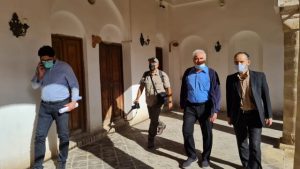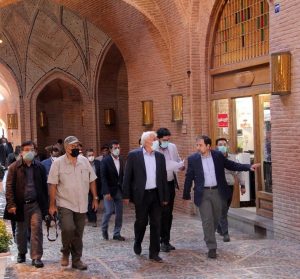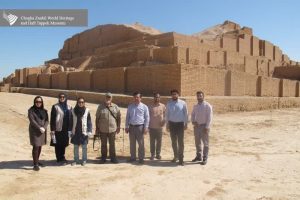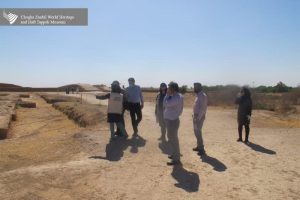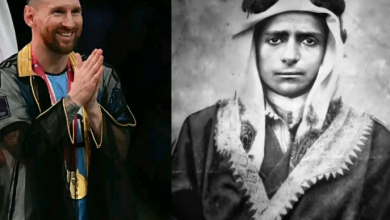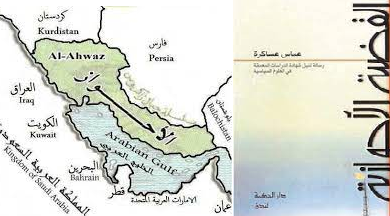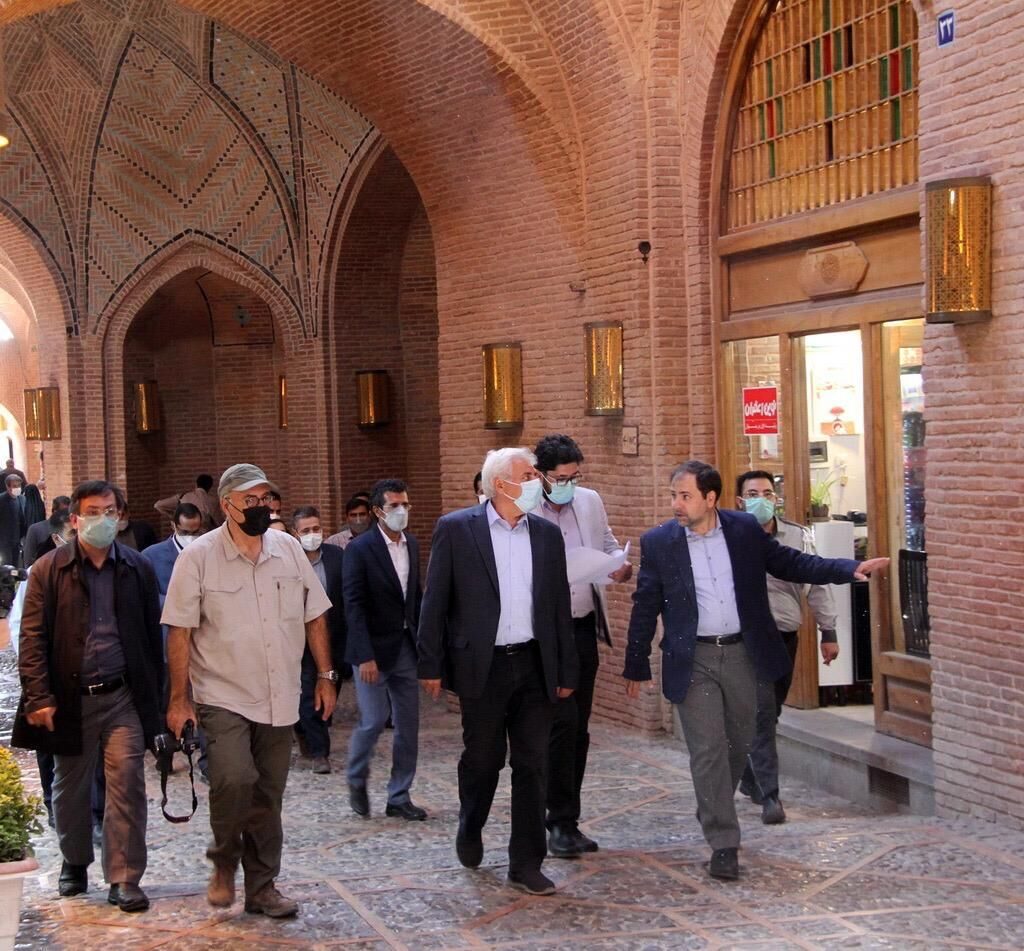
A UNESCO representative inspects the most prominent archaeological and historical sites in Tastar, Sous, and Ma’ashur
The representative of UNESCO, Chan Binan, visited the Al-Ahwaz monuments, as part of the international organization’s interest in the history of the occupied state of Ahwaz. It also constitutes a success for the Executive Committee of the Al-Ahwaz state, in its international role in order to protect the heritage of the Al-Ahwaz Arab people from looting and deliberate sabotage by the Persian occupation.
Taster
Chan Binan, a resident of (UNESCO), visited the site of “Taster Al-Khan” or “Travelers’ House” or “Karawanisrae”, an important historical landmark in the city of Tastar that emphasizes the importance of this city as a strategic location in the global trade movement in the past, where caravans and trade trips took from “Tester Khan” a point for them on their trips for resting and staying there.
The visit aims to conduct a field study of the global registration file of “Taster Khan” or what equivalent the house of caravans and travelers. In accordance with the established schedule, the delegation began its visit on the morning of Tuesday 17 October in order to record, preserve and restore the natural and spiritual heritage of the city of Tastar, the originality of the building, and its historical value is an important part among the elements that residents pay special attention to recording a work around the world.
Chan Binan also visited the office of the historical water buildings, the base and the waterfall complex, he visited the international recording factories and got acquainted with the way the group works.
He also visited the historical Tester hydraulic system, an irrigation system built on the Karun River, which has been on the World Heritage List since 2009. The irrigation system consists of dams, canals, tunnels and water wheels. The construction of this system dates back to the Sassanid era, and some parts of the system are said to date back to the Achaemenid king. Dara first. The project includes two diversion channels that transfer water from the Karun River, and one of these two channels is still used today to supply water to the city of Tester.
The city has ancient historical monuments dating back to the Elamite civilization and antiquities from the Achaemenid era, as well as the city honors the tomb of the Prophet of God Daniel (peace be upon him) and has an international reputation and tourists are coming to it from everywhere.
UNESCO representative visits Durantas temple in Suss
The representative of UNESCO “Chan Binan” and his accompanying delegation visited the temple of “Doruntach” in the occupied city of Sous, which was registered in 1979 in the list of world monuments with the World Organization UNESCO, and is located 45 km south of the ancient city of Sous and at 35 km from the west of the city of Tester and near the city of Seven Hills heritage.
These buildings are a temple of supplications and asceticism. They were built in 1250 BC by “Untash” the great king of Elam. It was built for the cult of “Izd Inshushinak,” the guardian of Sous, the Elamite heritage city.
And “Doruntach” one of the largest and largest historical temple in the Middle East. It belongs to the Elamite civilization and was built by order of the Elamite king Untachgal in the year one thousand two hundred and fifty BC.
The Doruntach Temple consists of five floors and intertwined walls. It was built of bricks and mud and it rises from atop a hill in one of the sides of the city of Sous. Inscriptions in the Elamite script were written on its walls, showing the age of the building and its historical heritage.
Searches and excavations began eighty years ago in this temple and are still ongoing. Thousands of tourists visit this historical edifice, which was registered in the World Heritage List (UNESCO), annually.
The representative of UNESCO and his accompanying delegation also visited the archaeological sites in the city of Ma’shour, to follow up on this important human heritage, which proves the civilization and history of the Ahwaz Arab people, and also exposes the attempts of the Persian occupation to obliterate the historical identity of the state of Al-Ahwaz.
Efforts of the Executive Committee of the State of Ahwaz
The visit of the UNESCO representative to occupied Ahwaz is considered a success of the efforts of the Executive Committee of the State of Ahwaz headed by Dr. Aref Al-Kaabi, to protect the Ahwaz heritage from the futility of the Persian occupation.
The Executive Committee of the State of Ahwaz has made numerous calls for the protection of antiquities and historical sites in Ahwaz, not only because it constitutes the Ahwaz identity and history, but also because it constitutes a human heritage for the whole world, and it requires UNESCO and the international community to work to protect this human heritage from Persian occupation crimes.
